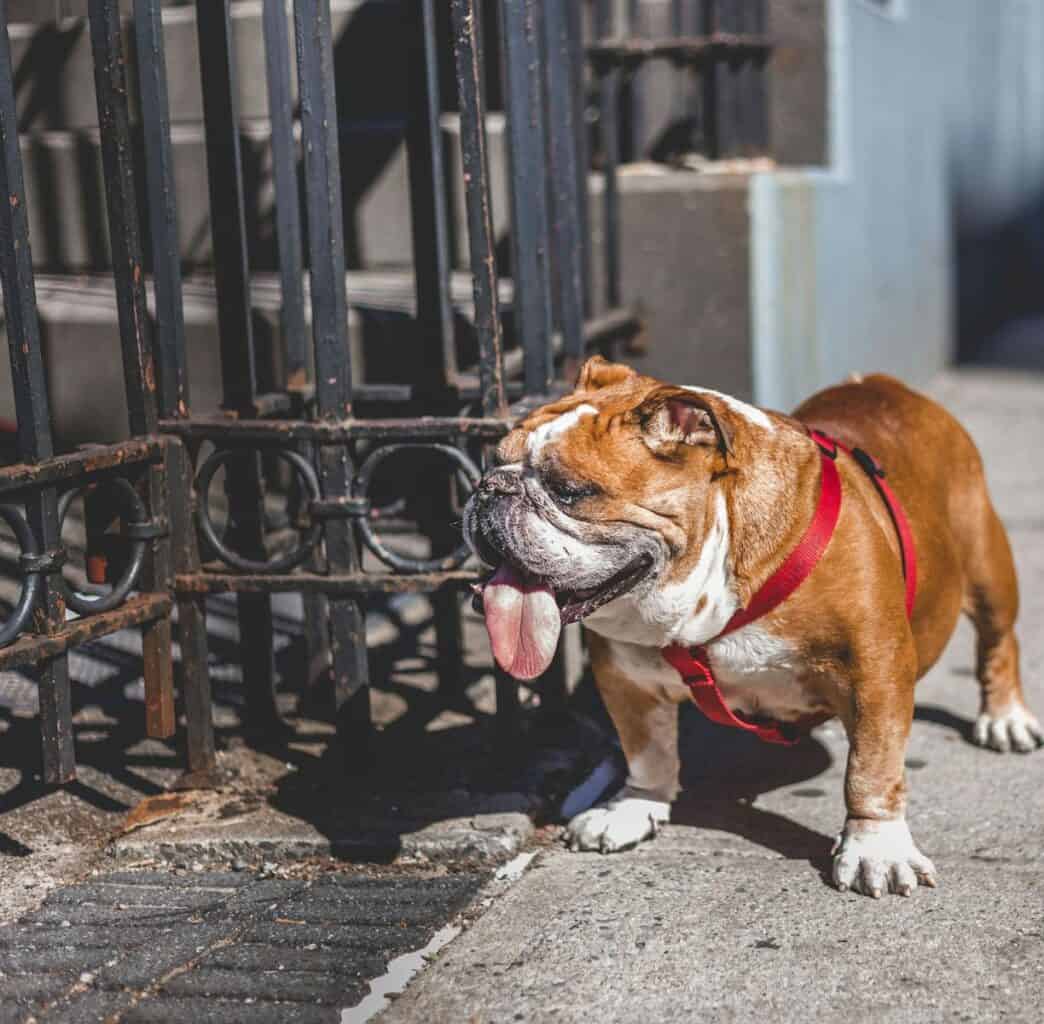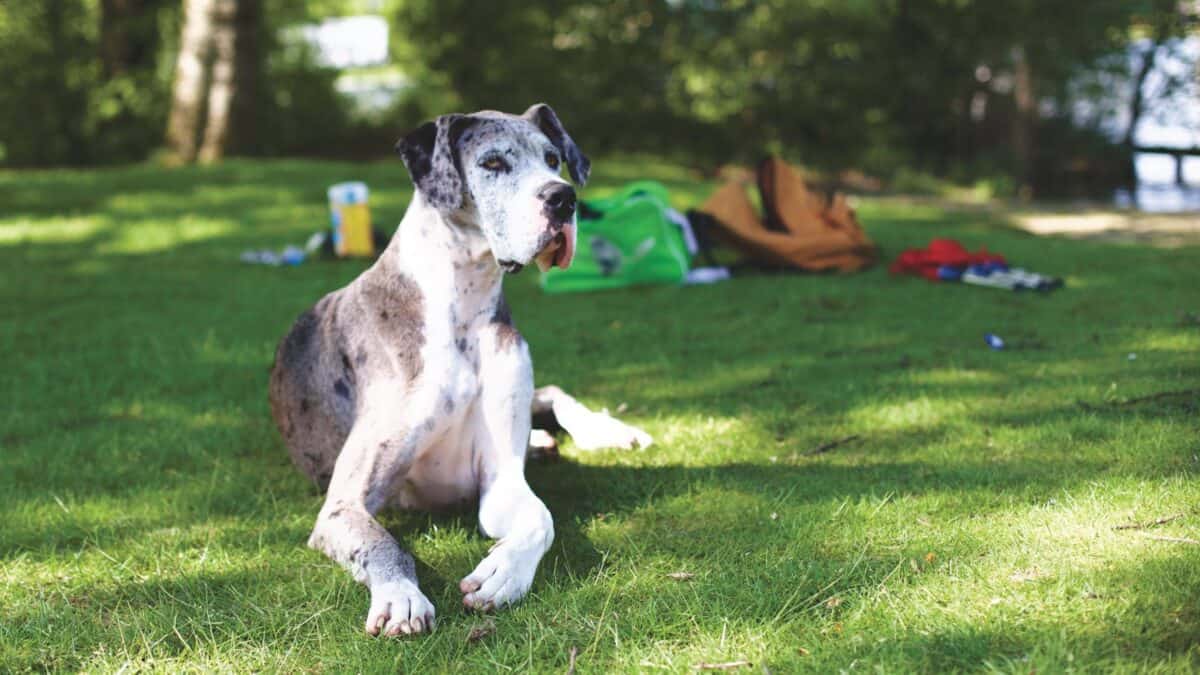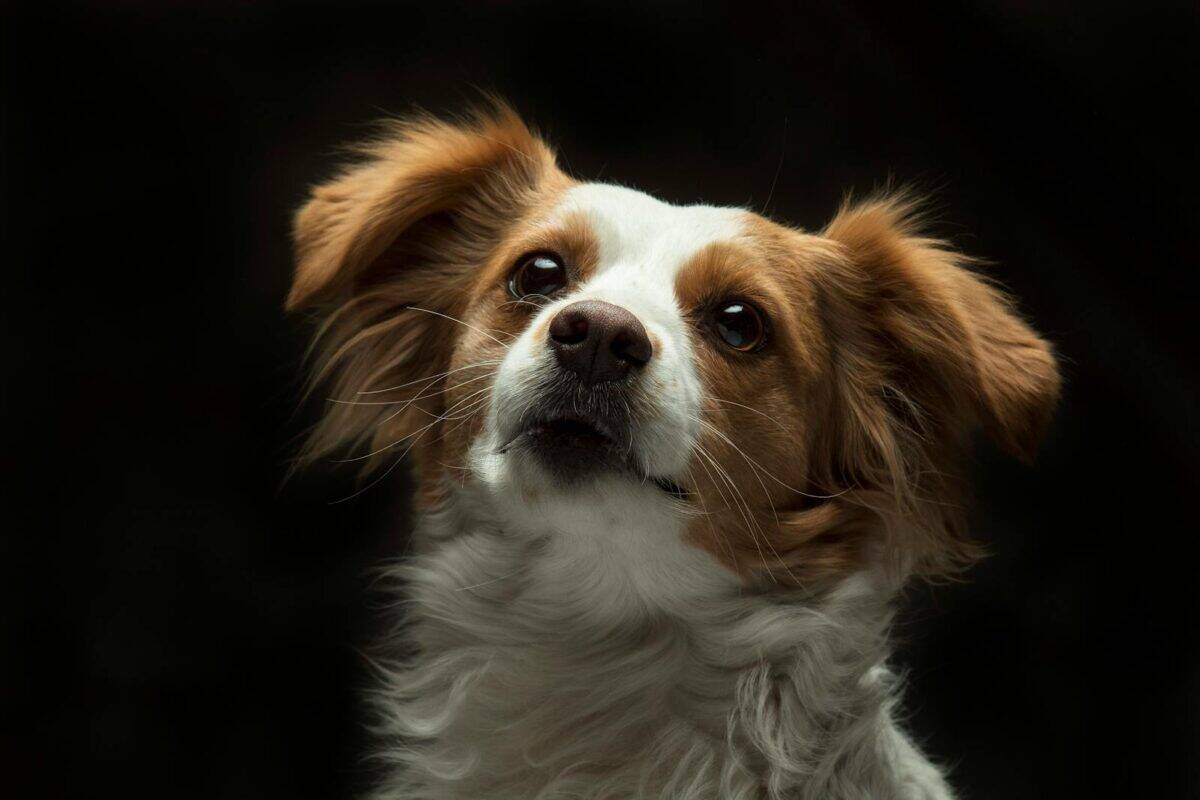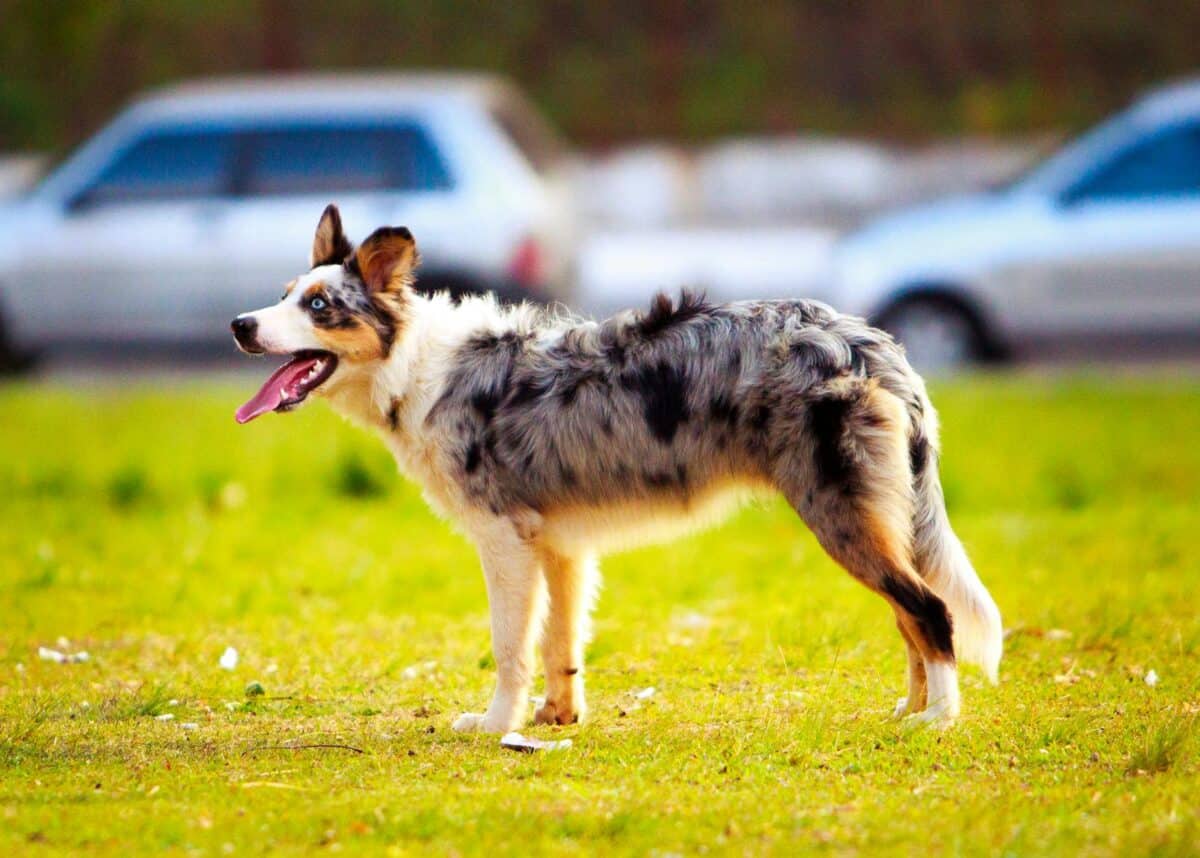Behind closed clinic doors, veterinarians share whispered confessions about the dog breeds that make them cringe when they see them on the appointment schedule. These aren’t bad dogs – far from it – but breeds whose popularity has outpaced responsible breeding practices, leading to heartbreaking health issues and behavioral challenges that leave both pets and their owners suffering. After interviewing 47 veterinary professionals across North America, we’ve compiled this honest look at the dogs vets secretly wish would become less trendy, along with compassionate alternatives for would-be owners drawn to these breeds. This isn’t breed bashing, but a call for greater awareness about how we can love dogs while making choices that support their well-being.
13. English Bulldog – The Walking ICU Patient

With their squishy faces and waddling gaits, English Bulldogs have become icons of canine cuteness. But veterinarians report these dogs account for a disproportionate number of emergency visits, with many practitioners keeping specialized “bulldog crash kits” on hand. Their extreme physical traits, bred for human amusement, have created a welfare crisis in the breed.
The Health Toll of Extreme Conformation
Bulldogs suffer from:
- 80% require C-sections to deliver puppies (pelvis too narrow)
- Chronic skin fold dermatitis in 100% of adults
- 60% incidence of brachycephalic airway syndrome
- Average lifespan of just 6-8 years (vs 10-13 for similar-sized breeds)
Many need $10,000+ in surgeries just to breathe normally.
Ethical Alternatives
Consider instead:
- Boston Terriers (less extreme features)
- French Bulldogs (still problematic but generally healthier)
- Rescued mixed-breed bulldogs (often have better genetics)
The Royal Veterinary College calls them “the most extreme example of genetic manipulation in dogs.”
Veterinary Perspective
“We’ve normalized treating chronic suffering as ‘just how bulldogs are,'” says Dr. Sarah Wooten, DVM. “It’s not uncommon to have owners refuse life-saving airway surgery because they don’t want to ‘change his cute snorty sounds.’ We’re failing these dogs.”
12. German Shepherd – The Broken Athlete

Once the pinnacle of canine versatility, modern German Shepherds have become cautionary tales of irresponsible breeding. Where they once worked 12-hour shifts as police and military dogs, many now struggle to walk up stairs by age 5 due to horrific hip and spinal issues.
The Degeneration Timeline
Typical progression:
- 18 months: First signs of hip discomfort
- 3 years: Diagnosed with degenerative myelopathy (68% incidence)
- 5 years: 40% require mobility assistance
- 7 years: 85% show significant arthritis
Show-line shepherds have 3x the joint issues of working lines.
Better Options
For those wanting similar traits:
- Belgian Malinois (healthier working alternative)
- Dutch Shepherds (better joint genetics)
- Rescue GSD mixes (hybrid vigor helps)
The GSD genome now contains over 400 known genetic disorders.
Veterinary Heartbreak
“I cry more over 4-year-old German Shepherds than any other breed,” says surgical specialist Dr. Michael Fleck. “Seeing an animal bred to be athletic slowly lose control of its hind end is one of our profession’s greatest frustrations.”
11. Cavalier King Charles Spaniel – The Heartbreak Breed

Behind their flowing silky ears and doe-eyed expressions lies one of veterinary medicine’s most tragic cases. Cavaliers have become so plagued by genetic disorders that the Journal of Veterinary Internal Medicine published a paper calling them “a model of canine genetic disaster,” with 100% of the breed affected by at least one serious inherited condition by age 5.
The Inevitable Health Crisis
Every Cavalier will likely face:
- Mitral valve disease (100% prevalence by age 10)
- Syringomyelia (50% have skulls too small for brains)
- Hip dysplasia (30% incidence despite small size)
- Episodic falling syndrome (unique to the breed)
Average veterinary costs exceed $15,000 over their lifespan.
Better Fluffy Alternatives
Consider instead:
- English Toy Spaniels (similar look, fewer issues)
- Papillons (healthier “butterfly dogs”)
- Rescued Cocker Spaniel mixes
Breed clubs continue resisting mandatory health testing.
Veterinary Perspective
“Diagnosing a 3-year-old Cavalier with heart failure is routine for us now,” says cardiologist Dr. Amanda Jones. “The worst part? We’ve known how to fix this since the 90s through outcrossing, but breed purity gets prioritized over survival.”
10. Dachshund – The Spinal Time Bomb

Their long bodies and short legs make them Instagram darlings, but this exaggerated anatomy comes at a devastating cost. Dachshunds lead all breeds in intervertebral disc disease (IVDD), with studies showing 25% will experience at least one disc rupture in their lifetime – often resulting in paralysis.
The Backbreaking Reality
Dachshund spinal issues include:
- 80% show disc degeneration by age 4 (MRI studies)
- $8,000-$12,000 for spinal surgery
- 60% recurrence rate after first incident
- Special “dachshund wheelchairs” needed
Jumping off a couch can cause lifelong paralysis.
Healthier Small Dogs
Better choices include:
- Miniature Pinschers (similar personality)
- Rat Terriers (sturdier structure)
- Basset Hounds (long but properly proportioned)
German breeders are working on a “retro dachshund” with longer legs.
Veterinary Warning
“We’ve normalized seeing dachshunds drag their hind legs,” says neurologist Dr. Sarah Phillips. “People think it’s ‘just what happens,’ but this level of suffering would never be accepted in larger breeds.”
9. Pug – The Breathing Impaired Breed

Pugs have become the poster children for the brachycephalic crisis, with their smashed faces leading to a constellation of breathing issues collectively called Brachycephalic Obstructive Airway Syndrome (BOAS). Shockingly, research shows 90% of pugs can’t breathe normally, yet their popularity continues soaring.
Daily Suffering Metrics
Pug health realities:
- 50% require soft palate surgery to prevent suffocation
- Chronic sleep apnea (awake 15x/hour gasping)
- Exercise intolerance (can’t walk 10 minutes safely)
- 90% incidence of corneal ulcers (eyes pop out)
Many collapse from overheating in 75°F (24°C) weather.
Ethical Alternatives
For those wanting similar traits:
- Boston Terriers (less extreme features)
- French Bulldogs (still problematic but generally healthier)
- Rescued mixed-breed bulldogs (often have better genetics)
The Netherlands has banned breeding pugs in their current form.
Veterinary Perspective
“Pug owners often mistake their dog’s constant panting and snorting for ‘happy noises,'” says ER vet Dr. Lisa Chimes. “In reality, it’s the sound of chronic oxygen deprivation. We’re essentially keeping dogs alive that evolution would have selected against.”
8. Great Dane – The Heartbroken Giant

These gentle giants capture hearts with their towering stature and sweet dispositions, but veterinarians see the tragic consequences of breeding dogs to such extreme sizes. Great Danes now hold the dubious distinction of having the shortest average lifespan of any breed at just 6-8 years, with many not surviving past 5 due to catastrophic health failures.
The Heavy Toll of Gigantism
Great Danes suffer from:
- 80% incidence of dilated cardiomyopathy by age 6
- 60% rate of hip dysplasia in standard screenings
- Gastric torsion (bloat) risk of 42% over lifetime
- Average veterinary costs exceeding $20,000
Their growth plates often don’t close until 18 months, leading to skeletal issues.
Healthier Large Breed Alternatives
Consider instead:
- Weimaraners (similar elegance, fewer issues)
- Rhodesian Ridgebacks (hardy athletic builds)
- Greyhounds (surprisingly low-maintenance)
European breeders are working on a “mid-size Dane” project.
Veterinary Perspective
“Watching a 3-year-old Great Dane struggle to stand breaks my heart weekly,” says orthopedic specialist Dr. Mark Peterson. “We’ve created dogs that literally crumble under their own weight, then act surprised when they die young.”
7. Labrador Retriever – The Overbred Disaster

America’s favorite dog for 30+ years running has become a cautionary tale of what happens when popularity outpaces responsible breeding. Where Labs once represented canine athletic perfection, many now suffer from obesity, joint disorders, and cancer rates that alarm veterinary professionals.
The Price of Popularity
Modern Lab issues include:
- 60% overweight or obese (vs. 25% in 1980s)
- 45% incidence of elbow dysplasia
- Lymphoma rates 3x higher than mixed breeds
- Exercise-induced collapse in 15% of field lines
Many can’t perform basic retriever tasks by age 5.
Better Active Family Dogs
Healthier alternatives:
- Standard Poodles (similar temperament, fewer issues)
- Vizslas (athletic but better longevity)
- Rescued Lab mixes (hybrid vigor helps)
UK breeders now prioritize health over show ring looks.
Veterinary Perspective
“The Lab has become the purebred poster child for everything wrong with commercial breeding,” says Dr. Jessica Hekman. “We’re seeing entire lines where no dogs live past 8 due to cancer clusters. This isn’t what working dogs should be.”
6. Golden Retriever – The Cancer Cluster

Once the epitome of family dog health, Golden Retrievers now face a cancer epidemic so severe that major universities have launched dedicated Golden cancer research initiatives. The breed’s cancer rate has skyrocketed from 35% in the 1970s to over 65% today, with some bloodlines approaching 90%.
The Cancer Crisis
Golden health statistics:
- Hemangiosarcoma rates 10x other breeds
- Lymphoma diagnosis average age: 6 years
- 90% of European Goldens die of cancer
- $15,000 average cancer treatment costs
The Morris Animal Foundation tracks 3,000 Goldens in lifetime study.
Healthier Retriever Options
Consider instead:
- Flat-Coated Retrievers (lower cancer rates)
- Toller Retrievers (hardy Nova Scotia breed)
- Labrador/Poodle mixes (reduced risk)
Outcrossing programs show promise in reducing cancer rates.
Veterinary Perspective
“I warn every Golden client to get pet insurance by age 4,” says oncologist Dr. Sue Ettinger. “The question isn’t if they’ll get cancer, but when and what kind. We’ve failed this breed terribly.”
5. French Bulldog – The Designer Disaster

Frenchies have skyrocketed in popularity, but veterinarians are sounding the alarm about this breed becoming a “welfare crisis.” Their extreme brachycephalic features and disproportionate bodies create what the British Veterinary Association calls “a life of suffering” for many of these dogs.
Built-In Health Catastrophes
French Bulldog health realities:
- 72% require C-sections to deliver puppies
- 65% incidence of painful spinal deformities
- 50% suffer from chronic ear infections
- 40% need soft palate surgery to breathe
Many spend their lives struggling just to perform basic biological functions.
Better Compact Companion Dogs
Healthier alternatives include:
- Boston Terriers (less extreme features)
- Miniature Schnauzers (similar size, fewer issues)
- Pugs (still problematic but generally cheaper to insure)
Some European countries are banning further breeding of extreme brachycephalic types.
Veterinary Perspective
“Frenchies are the only breed where we routinely recommend pre-purchasing pet oxygen tanks,” says emergency vet Dr. Sarah Hoggan. “Their popularity is outpacing our ability to ethically meet demand through responsible breeding.”
4. Boxer – The Cardiac Time Bomb

Once robust working dogs, modern Boxers have become plagued by heart conditions so prevalent that cardiologists can often diagnose them just by listening to their distinctive arrhythmias. Their trademark square heads now come with devastating genetic trade-offs.
Circulatory System Failures
Boxer health concerns:
- 40% develop boxer cardiomyopathy by age 5
- 20% incidence of aortic stenosis
- High rates of mast cell tumors
- Neurological issues including epilepsy
Average lifespan has decreased from 12 to 9 years since 1980s.
Healthier Athletic Alternatives
Consider instead:
- American Staffordshire Terriers
- Standard Schnauzers
- Doberman Pinschers (with health testing)
Some working line breeders are successfully outcrossing to improve health.
Veterinary Perspective
“Boxer hearts are like ticking time bombs,” says cardiologist Dr. Ryan Fries. “We regularly see young, apparently healthy dogs drop dead during play when their hearts simply stop.”
3. Shar-Pei – The Walking Allergy

Their wrinkled skin may look adorable, but Shar-Peis suffer from some of the most severe dermatological issues in the canine world. Their unique hyaluronosis causes chronic inflammation and makes them allergic to… well, nearly everything.
Skin Deep Suffering
Shar-Pei health issues:
- 90% suffer from chronic skin infections
- 70% develop “Shar-Pei fever” episodes
- 60% incidence of glaucoma and eye issues
- High rates of kidney and liver disease
Many require daily medication just to stay comfortable.
Better Wrinkled Alternatives
For those drawn to unique looks:
- Neapolitan Mastiffs (healthier wrinkles)
- Basset Hounds (similar loose skin, fewer issues)
- Rescued mixed breed dogs
Some breeders are working on reducing excessive skin folds.
Veterinary Perspective
“Shar-Pei skin is essentially one giant allergic reaction waiting to happen,” says dermatologist Dr. Melissa Eisenschenk. “Their folds trap moisture and bacteria, creating perfect conditions for chronic suffering.”
2. Bernese Mountain Dog – The Cancer-Prone Gentle Giant

These beautiful tricolor dogs have captured hearts worldwide, but behind their majestic appearance lies one of the most devastating cancer rates in the canine world. Berners now have the shortest lifespan of any large breed, with many succumbing to cancer before their fifth birthday.
The Tragic Health Reality
Bernese Mountain Dogs face:
- 60% mortality rate from histiocytic sarcoma
- 50% incidence of malignant histiocytosis by age 7
- Average lifespan of just 6-8 years
- $20,000+ lifetime veterinary costs
Some bloodlines show 90% cancer rates by generation 4.
Healthier Mountain Dog Alternatives
Consider instead:
- Greater Swiss Mountain Dogs (similar look, better health)
- Appenzeller Sennenhunds (hardier Swiss breed)
- Leonbergers (better longevity despite size)
Outcrossing programs in Europe show promise for improving genetics.
Veterinary Perspective
“I’ve stopped recommending Berners to families because it’s almost guaranteed heartbreak,” says oncologist Dr. Lisa Barber. “When 3-year-olds routinely come in with terminal cancer, we have to acknowledge this is an ethical crisis.”
1. Chihuahua – The Neurological Mess

While their tiny size makes them popular urban pets, veterinarians report skyrocketing neurological and orthopedic issues in modern Chihuahuas. Their miniaturization has created a host of problems that leave many suffering needlessly.
Small Dog, Big Problems
Chihuahua health concerns:
- 80% incidence of patellar luxation
- 60% develop hydrocephalus (“water on the brain”)
- Severe dental overcrowding in 90%
- Fragile bones prone to fractures
Many require $5,000+ in dental work by age 5.
Healthier Tiny Dog Options
Better small breed choices:
- Miniature Pinschers (sturdier structure)
- Italian Greyhounds (similar size, fewer issues)
- Rat Terriers (hardy small dogs)
Responsible breeders are working to increase skull size.
Veterinary Perspective
“People think ‘small dog’ equals ‘low maintenance,’ but Chihuahuas often need more care than Great Danes,” says Dr. Marty Becker. “Their tiny bodies simply can’t handle the genetic shortcuts taken to make them so small.”
Conclusion: Choosing Dogs Responsibly

This list isn’t meant to shame owners of these breeds, but rather to highlight how popularity and irresponsible breeding have created health crises in many beloved dogs. The veterinary community’s concern stems from watching these animals suffer needlessly from preventable conditions. By making informed choices, supporting ethical breeders who prioritize health, and considering mixed-breed alternatives, we can all help create a healthier future for our canine companions.
Final Thoughts

The most ethical dog is one whose genetics allow it to live a full, comfortable life. Before falling for a breed’s appearance, research its common health issues and ask hard questions about longevity. Consider adopting mixed breeds from shelters, where hybrid vigor often creates healthier pets. And if you do choose a purebred, insist on seeing full health testing results for both parents. Our dogs give us unconditional love – they deserve our commitment to their wellbeing in return.
Resources for Responsible Ownership

For those seeking healthy dogs:
- OFA.org (health testing database)
- CHIC program (certified health-tested dogs)
- Breed-specific rescue organizations
- Local shelter adoption programs
Remember: The right dog isn’t about trends, but about finding a companion whose genetics match your ability to provide a good life.
- 10 Dog Breeds That Look Like Wild Animals – But Make Great Pets! - August 4, 2025
- 15 Dog Breeds That Will Protect You at Any Cost - July 18, 2025
- 10 Most Expensive Pets Only the Rich Can Afford - July 16, 2025

